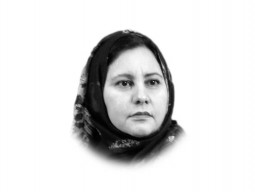
Reportedly, three provinces oppose the construction of Kalabagh dam. Why? The arguments in favour of building the dam are technically sound while the arguments against its construction are based on unfounded emotions and heresy. While conceiving the construction of large projects, two most important factors to consider are the national interest in the long run and technical feasibility of the undertaking.
Students exposed to unsafe drinking water in Karachi: report
If both indicators are in favour of building it and the arguments against its construction are based on myths, we must go ahead with its construction. A regional group thinks the construction of Kalabagh dam will submerge Nowshera during a super high flood. The argument is fallacious as the dam site is located 120 miles downstream of Attock Bridge and maximum upstream level will only reach up to 90 miles, according to the design.
Our two large dams, Mangla and Tarbella, are gradually losing their capacity of water storage because of the silt deposits. Even Taunsa Barrage located on the River Indus is suffering from the same malady. Its originally designed capacity of a million cusecs has reduced to about 0.6 to 0.7 million cusecs because of the gradual silting up of its upstream pond area. As a result, during heavy rains in upstream areas of Taunsa Barrage, the water discharge into the River Indus touches dangerous levels, often breaching the protective bunds and inundating the surrounding areas. The construction of Kalabagh dam could easily control floods in its downstream basin. Let’s keep in mind that the River Indus is the only dependable source of water for sustaining life and for agricultural purposes. The Chenab, once a raging river, now looks like a stream.
The existing water situation is indeed scary. We didn’t expect from the PPP government that ruled for five years to build new dams, let alone build the most feasible Kalabagh dam. Neither did the Nawaz Sharif government talk about it in the last four years that it has been in power. However, in recent times it was only Gen Musharraf, who single-handedly ruled the country for about a decade, could have built Kalabagh dam if he had the will to do it. Unfortunately, he contented himself with showing his punches and Pakistan First mantra. Things mess up when dictators want to act democrats. They remain neither dictators nor democrats and finally end up in Dubai. Had Musharraf built Kalabagh dam, he would have been living in his Islamabad farmhouse.
The subsoil water level in Lahore is going down at the rate of about two feet a year. With the population of the mega city growing in geometrical progression, the drop in the subsoil water may experience a sharp increase in proportion with the increase in the population. Some years ago, there was a proposal to build a dam on the River Ravi near Shahdara for the specific purpose of recharging the underground aquifers for human consumption. The proposal never materialised. It’s quite likely that residents of Lahore might have to meet their requirement of drinking water by the tanker service as it’s done in Karachi.
Pakistan needs 22 billion cubic metres increase in water storage capacity by 2025
In some parts of the city, the water level has gone so low that what is drawn out from underground is contaminated with high percentage of arsenic, making the water unfit for human consumption. The River Ravi, in any case, has reduced to a slimy pond to serve as an outlet for the sprawling city’s sewage. Instead of planning ahead of time, our governments seem to run on a day-to-day basis.
The Pakistan Council of Research in Water Resources warns that the country touched ‘water-stress line’ in 1990 and it may face an alarming situation of ‘water scarcity’ by the year 2025. Population and water scarcity bombs have begun ticking together. The population impact is evident by the fresh census. And a drought-like situation, as result of water scarcity, is just around the corner. Meanwhile, we are busy washing our cars and homes with potable water. A public awareness drive to save water — our lifeline, is the need of time.
Published in The Express Tribune, December 23rd, 2017.
Like Opinion & Editorial on Facebook, follow @ETOpEd on Twitter to receive all updates on all our daily pieces.








1729685382-0/Untitled-design-(57)1729685382-0-270x192.webp)











COMMENTS
Comments are moderated and generally will be posted if they are on-topic and not abusive.
For more information, please see our Comments FAQ